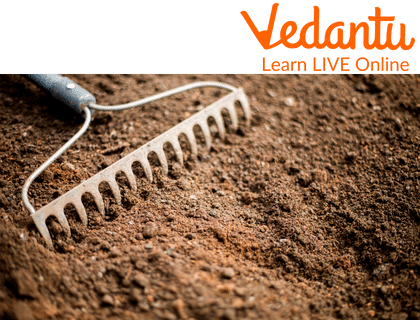




Soil and Its Types
What is soil? Soil is commonly referred to as the naturally occurring organic matter found on the earth's surface. It is mainly composed of minerals, nutrients, water, other inorganic particles, and some remains of plants and animals.
There are different types of soil, and they are classified primarily based on the size of the particles and the percentage of particles present in them—the three primary types of soil based on their texture are sand, loam, and clay.
Other types of soil are based on the percentage of particles, resulting in more mixed soil types: loamy sand, sandy soil, silty soil, etc. Apart from these, soils are also classified based on their colour – red, black, and brown soil.
What is Sandy Soil?
Sand or sandy soil comprises the smallest or finer particles of weathering rocks. This soil is known as the worst type of soil for agriculture and plant growth as it has very low nutritional value and poor water-holding capacity.
This soil is mostly found in arid to semi-arid regions of western Rajasthan, southern Haryana, southwestern Punjab, and northwestern parts of Gujarat, and along the eastern and western coasts of India.

Sandy Soil
Constituents of Sandy Soil
Sandy soil is also called "light soil". Generally, sandy soil is composed of 35% sand and less than 15% silt and clay. Sand is mainly small pieces of eroded rocks that have a gritty texture. In sandy soils, most soil pore diameters are larger than 2 mm.
Properties of Sandy Soil
Sandy soil is less fertile as it contains less humus.
Sandy soils have the fastest and greatest water drainage, and the least water retention.
Sandy soil is well-aerated and has low water absorption.
Sandy soil particles are weakly compacted (loose).
10 Uses of Sandy Soil
The uses of sandy soil are numerous in different regions. The following are the uses of sandy soil:
Agricultural requirement.
Easy Drainage - Sandy soils have great drainage properties. It comes off easily and quickly. It is used to improve the drainage of the soil.
Construction - Sandy soil is not sticky. It is inconsistent. It has a light and loose structure. Hence it can be easily used for construction work.
Foundation - The sandy soil provides the basis for the foundation on the marshy land.
Beauty - Sandy soils start from a sandy surface almost like beaches. It enhances the beauty of the beach.

Sandcastle at the Beachside
Abrasive Properties - Sandy soils have very good abrasive properties.
Small Settlements - Sandy soil has fewer settlements because it does not undergo consolidation over time. In addition, it has immediate settlements.
Changing pH - The pH level of sandy soil can easily change the pH level of the soil, like clay. The pH level of sandy soil is 7.00 to 8.00.
Others - Sandy oil is used to reduce the velocity of the water. It also helps in percolating the soil and raising the water level.
Uses of Sandy Soil in Agriculture
Sandy soils are generally dry, nutrient-dense, and fast-draining. It is used for planting and cultivation. For useful vegetables like potatoes, grams, tomatoes, etc., a minimum percentage of this soil is required for a given period. The percentage varies from vegetable to vegetable. The sandy soil also provides good land for the farmers to collect the fallen nuts.
Solved Questions
1. State the characteristics of sandy soil.
Sandy soils essentially consist of small particles produced by weathering rocks. It is also very low in nutrients and poor at holding water, which makes it one of the worst types of soil for agriculture.
2. Write True or False.
Sandy soil is very good for agriculture and plant growth. - False.
Sandy soil has the smallest particles of rock. - True
Learning by Doing
Kids Activity: What grows best?
Bring different types of soils, such as topsoil, clay, and sandy soil (or even sand). It's mandatory. You can get these soils from a nursery or gardening store.
Ask students to plant seeds in each type of soil and see how they grow. Which soil is best for plants? Which soil is the worst? If possible, try experimenting with different seeds, such as grasses, flowers, and vegetables. Different plants grow best in different types of soil.
Summary
This chapter discussed the uses of sandy soil. As we know, sandy soil is different from other soils, and has many uses. We have already read many of them, which is quite interesting.
FAQs on Uses of Sandy Soil
1. What are the main uses of sandy soil in agriculture and construction?
Sandy soil has several important uses across different fields. Its main applications include:
- Agriculture: It is ideal for growing certain crops that require excellent drainage and do not tolerate waterlogging, such as coconuts, watermelons, cacti, and groundnuts.
- Construction: It is a fundamental component in making mortar and concrete, where it provides bulk and structural strength.
- Filtration Systems: Due to its high permeability, it is used in water filtration and septic systems to allow water to pass through while trapping larger impurities.
- Landscaping: It is used to improve soil drainage in gardens, as a base material for laying paving stones, and in creating recreational areas like volleyball courts and beaches.
2. What are the key characteristics of sandy soil?
Sandy soil is primarily identified by its physical properties. The main characteristics are:
- Texture: It has a gritty and coarse texture due to its large particle size (0.05 mm to 2 mm).
- Water Retention: It has very low water-holding capacity because the large spaces between particles cannot hold water against gravity.
- Drainage: It has excellent drainage and the highest percolation rate among soil types, meaning water passes through it very quickly.
- Nutrient Content: It is generally low in nutrients, as they are easily washed away with the water (a process called leaching).
- Aeration: The large air pockets between particles ensure the soil is well-aerated, providing plenty of oxygen for plant roots.
3. How is sandy soil formed in nature?
Sandy soil is formed over thousands of years through the physical weathering and erosion of rocks. Parent rocks rich in minerals like quartz, such as granite and limestone, are broken down into tiny particles by natural forces like wind, rain, and temperature changes. These small, weathered rock fragments accumulate to form sandy soil.
4. Why is sandy soil's high percolation rate both an advantage and a disadvantage?
The high percolation rate of sandy soil is a dual-edged feature. It is an advantage because it prevents waterlogging, which can suffocate plant roots and cause them to rot. This makes it perfect for drought-resistant plants. However, it is a disadvantage because it leads to poor water and nutrient retention. Essential nutrients for plant growth are quickly washed away, making the soil less fertile for crops that require consistent moisture and nutrition.
5. How can the properties of sandy soil be improved for growing a wider variety of plants?
To make sandy soil more suitable for general agriculture, its properties can be improved by increasing its ability to retain water and nutrients. The most effective method is to add organic matter such as compost, peat moss, or aged manure. This organic material helps bind the loose sand particles, improves water retention, and slowly releases essential nutrients into the soil, making it more fertile.
6. Why do crops like watermelon and coconut thrive in sandy soil while most vegetables do not?
Crops like watermelon and coconut have root systems adapted to well-drained conditions and do not require constantly moist soil. Sandy soil's excellent drainage prevents root rot, which these plants are susceptible to. In contrast, most common vegetables like tomatoes and lettuce require a steady supply of water and nutrients. The poor water and nutrient-holding capacity of sandy soil makes it difficult for these plants to survive without significant amendment.





















